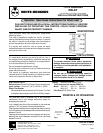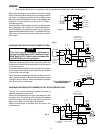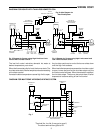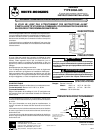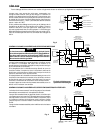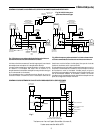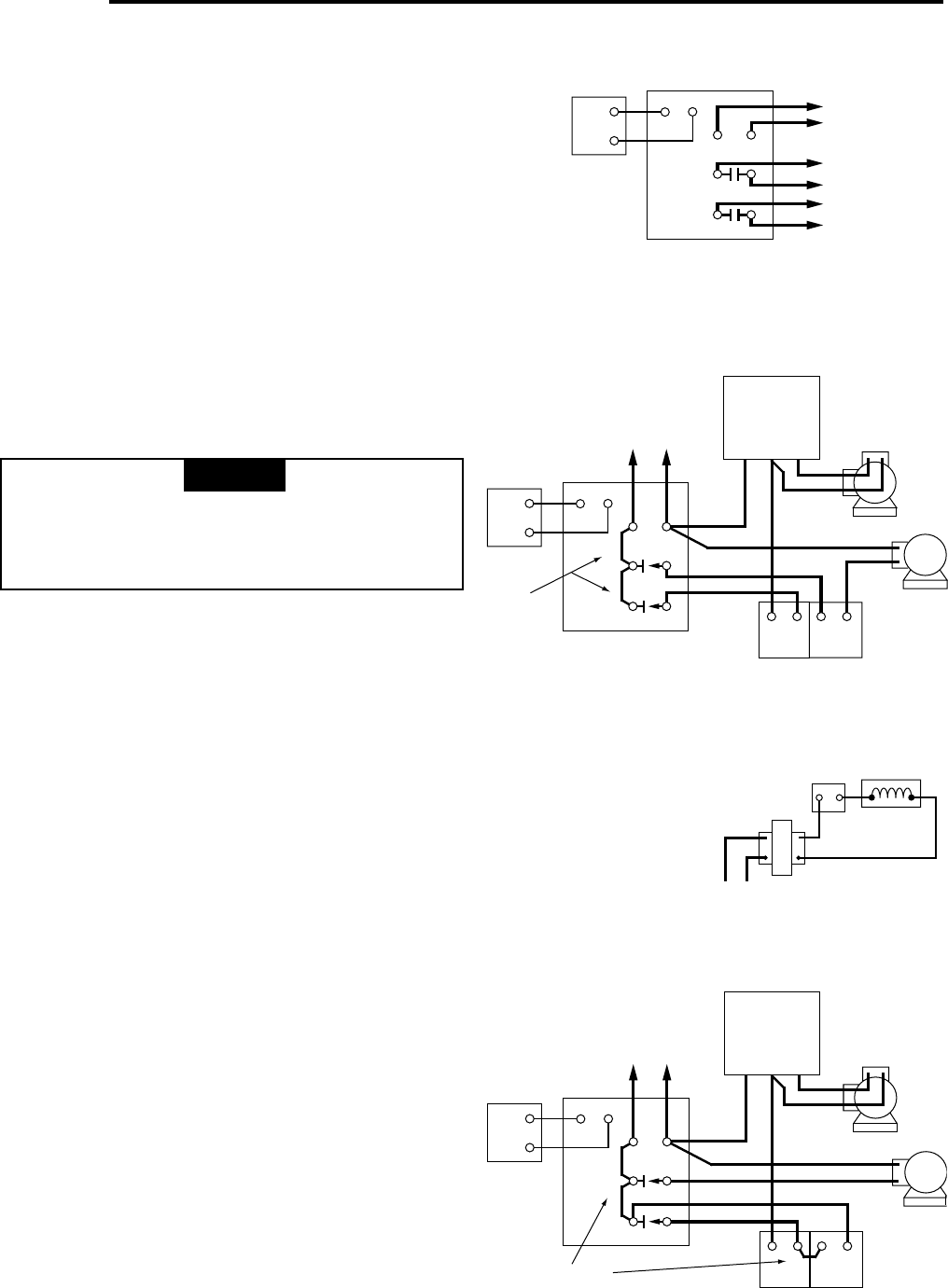
2
X
X
X X
T
1
4
2
3
T
56
WIRING
All wiring should be done in accordance with local and national electrical codes and ordinances.
When using this relay to control both line and low voltage
loads, wires must be formed so that low voltage wires do
not touch line voltage terminals and line voltage wires
must not touch low voltage terminals. Low voltage wires
(except to “Therm” terminals) must be N.E.C. Class 1
insulated type only.
If the manufacturer of the boiler or the burner has supplied
wiring diagrams, then follow such recommendations. If
none are supplied, the diagrams shown on the next two
pages show representative circuits. Type 829A-845 is for
120v input only, but the contacts can be used to switch
240v loads.
TYPE 668 OIL
BURNER CONTROL
(LINE VOLTAGE)
IGNITION
TRANS.
CIRCULATOR
MOTOR
CIRCULATOR
CONTROL
HIGH
LIMIT
HOT
LINE
N
TYPE 668 OIL
BURNER CONTROL
(LINE VOLTAGE)
IGNITION
TRANS.
BURNER
MOTOR
CIRCULATOR
MOTOR
HOT
LINE
N
DIAGRAM FOR BOILER WITH DOMESTIC COIL WITH STORAGE TANK
The low limit control maintains domestic hot water at
desired temperature year-round.
When the thermostat calls for heat, both the burner and
circulator start. If excessive boiler temperature causes
high limit to open, the circulator continues to run, but the
burner shuts down until the high limit recloses.
When the thermostat is satisfied, both the burner and
circulator stop.
Fig. 3a & 4a Diagram for
Gas-Fired System
T
1
4
2
3
T
56
Fig. 2
BURNER
MOTOR
THERMOSTAT
FIELD
INSTALLED
JUMPERS
Fig. 3
TRANS.
HIGH LIMIT
24 VAC
GAS VALVE
LOW
LIMIT
HIGH
LIMIT
Fig. 4
THERMOSTAT
HOT
LINE
N
TO LOAD
TO POWER
TO LOAD
TO POWER
LOW VOLTAGE
2-WIRE
THERMOSTAT
FIELD INSTALLED
JUMPERS
X X
T
1
4
2
3
T
5
6
DIAGRAM FOR BOILER WITHOUT DOMESTIC COIL
This circuit can be functionally duplicated by
using a Type 809A Relay (SPST) instead of a Type
829A Relay (DPST). Refer to sheet included with
Type 809A Relay for wiring diagram.
NOTE
When the thermostat calls for heat, the burner starts. The
circulator also starts if boiler temperature is above setting
of circulator control.
If excessive boiler temperature causes high limit to open,
the circulator continues to run but the burner shuts down
until the high limit recloses.
When low boiler temperature causes circulator control to
open, the burner stays on but the circulator stops until the
circulator control recloses. When thermostat is satisfied,
both burner and circulator stop.



